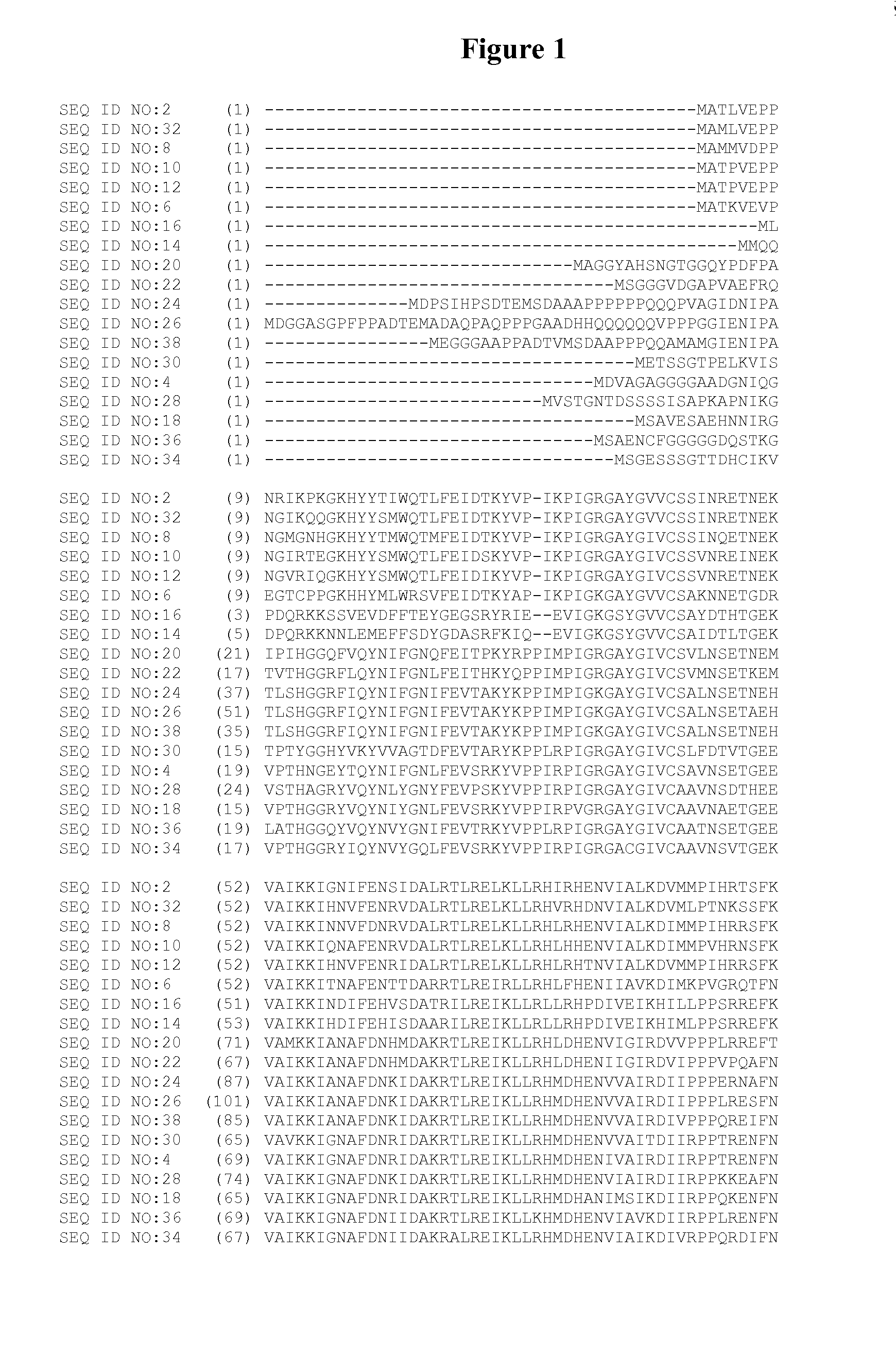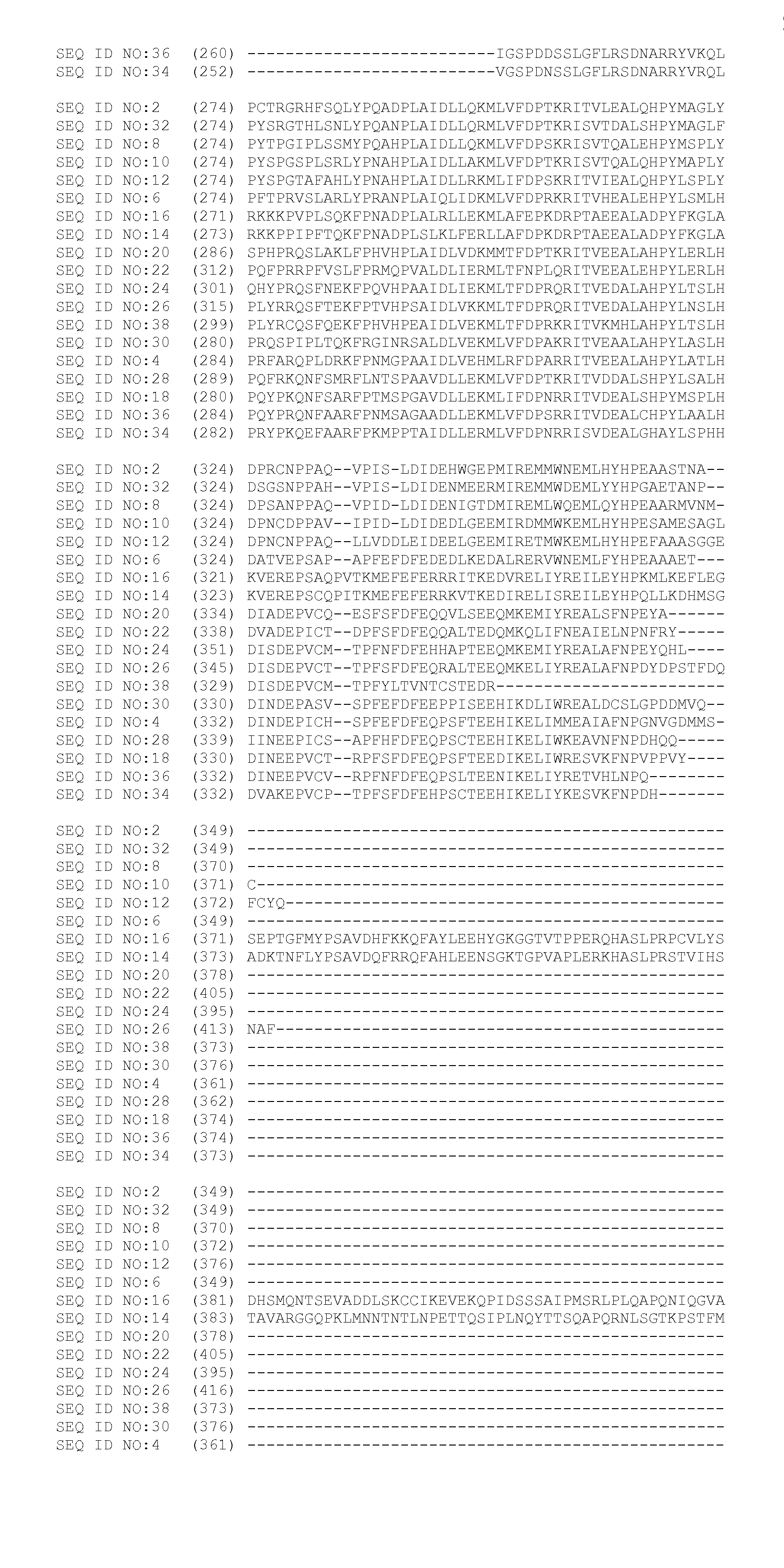Transgenic Plants With Increased Stress Tolerance and Yield
a technology of stress tolerance and plant, applied in the field of transgenic plants, can solve the problems of limiting the growth and crop yield of plants, cell death and consequently yield loss of plant cells, and plant cell loss water, etc., and achieves the effects of increasing water use efficiency, increasing range, and increasing water use efficiency
- Summary
- Abstract
- Description
- Claims
- Application Information
AI Technical Summary
Benefits of technology
Problems solved by technology
Method used
Image
Examples
example 1
Characterization of cDNAs
[0454]cDNAs were isolated from proprietary libraries of the respective plant species using known methods. Sequences were processed and annotated using bioinformatics analyses. The degrees of amino acid identity and similarity of the isolated sequences to the respective closest known public sequences are indicated in Tables 2A through 11A, Tables 2B through 19B, Tables 2C through 16C, Tables 2D through 24D and Tables 2E through 4E (Pairwise Comparison was used: gap penalty: 10; gap extension penalty: 0.1; score matrix: blosum62).
TABLE 2AComparison of GM47143343 (SEQ ID NO: 2) to known mitogen activated protein kinasesPublic Database Accession #SpeciesSequence Identity (%)AAD32204Prunus armeniaca88.60%NP_179409A. thaliana85.90%BAA04870A. thaliana85.60%CAN70944Vitis vinifera82.90%ABO84371M. truncatula82.90%
TABLE 3AComparison of EST431 (SEQ ID NO: 4)to known mitogen activated protein kinasesPublic Database Accession #SpeciesSequence Identity (%)CAN75543V. vinife...
example 2
Characterization of Genes
[0471]Lead genes b1805 (SEQ ID NO:287), YER015W (SEQ ID NO:289), b1091 (SEQ ID NO:317), b0185 (SEQ ID NO:319), b3256 (SEQ ID NO:321), b3255 (SEQ ID NO:329), b1095 (SEQ ID NO:335), b1093 (SEQ ID NO:343), slr0886 (SEQ ID NO:345), and slr1364 (SEQ ID NO:397) were cloned using standard recombinant techniques. The functionality of each lead gene was predicted by comparing the amino acid sequence of the gene with other genes of known functionality. Homolog cDNAs were isolated from proprietary libraries of the respective species using known methods. Sequences were processed and annotated using bioinformatics analyses. The degrees of amino acid identity of the isolated sequences to the respective closest known public sequences (Pairwise Comparison was used: gap penalty: 10; gap extension penalty: 0.1; score matrix: blosum. 62) were used in the selection of homologous sequences as indicated in Tables 2F through 11F
TABLE 2FComparison of b1805 (SEQ ID NO: 288) to known...
example 3
Characterization of Genes
[0478]Sterol pathway genes B0421 (SEQ ID NO:413), YJL167W (SEQ ID NO:415), SQS1 (SEQ ID NO:435), and YGR175C (SEQ ID NO:443) were cloned using standard recombinant techniques. The functionality of each sterol pathway gene was predicted by comparing the amino acid sequence of the gene with other genes of known functionality. Homolog cDNAs were isolated from proprietary libraries of the respective species using known methods. Sequences were processed and annotated using bioinformatics analyses. The degrees of amino acid identity of the isolated sequences to the respective closest known public sequences are indicated in Tables 2G through 5G (Pairwise Comparison was used: gap penalty: 11; gap extension penalty: 1; score matrix: blosum62). The degrees of amino acid identity and similarity of the isolated sequences to the respective closest known public sequences were used in the selection of homologous sequences as described below.
TABLE 2GComparison of B0421 (SEQ...
PUM
| Property | Measurement | Unit |
|---|---|---|
| Stress optical coefficient | aaaaa | aaaaa |
Abstract
Description
Claims
Application Information
 Login to View More
Login to View More - Generate Ideas
- Intellectual Property
- Life Sciences
- Materials
- Tech Scout
- Unparalleled Data Quality
- Higher Quality Content
- 60% Fewer Hallucinations
Browse by: Latest US Patents, China's latest patents, Technical Efficacy Thesaurus, Application Domain, Technology Topic, Popular Technical Reports.
© 2025 PatSnap. All rights reserved.Legal|Privacy policy|Modern Slavery Act Transparency Statement|Sitemap|About US| Contact US: help@patsnap.com



